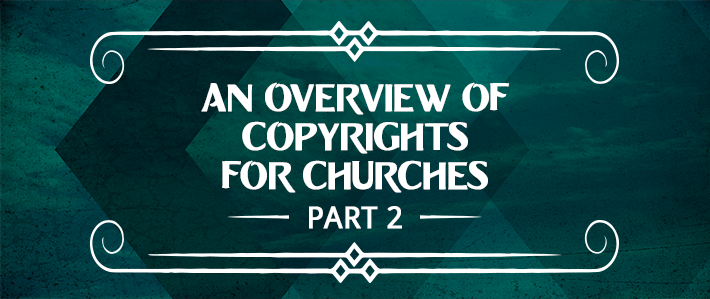
While the copyright law in the US provides several rights exclusively to the rights holders of a creative work, the law nonetheless allows use of works, even those covered by copyright, in specific ways. To protect the ability of artists to reference one another’s work, teachers to educate, and critics and commentators to reference artistic works, the copyright law provides a series of principles collectively known as Fair Use.
Notwithstanding the provisions of sections 10 6 and 106 A, the fair use of a copyrighted work, including such us e by reproduction in copies or phonorecords or by any other means specified by that section, for purposes such as criticism, comment, news reporting, teaching (including multiple copies for class room use), scholars hip, or research, is not an infringement of copyright. (US Copyright C ode Section 107)
Unfortunately, it doesn’t expressly provide for exactly where the line between Fair Use and copyright infringement is. Instead the law contains a series of factors to use in determining whether a particular use is infringing or Fair Use. Court cases have further defined where the lines are, but some grey areas remain.
As with any article on legal matters be aware that your situation is unique and specific questions are best answered by an attorney familiar with the laws relating to copyrights.
Now that we have that covered, let’s look at the factors:
Purpose of Use
The first factor looks at why you’re using the material. Uses which focus on education, commentary, criticism or parody have generally been regarded as leaning towards fair use, while commercial reasons (charging money) or uses which imply endorsement of a product are almost definitely not fair use.
The implications for the Church are straightforward. Use of short quotes from copyrighted materials in a class room or Bible study setting when there is no time to obtain permission is probably fair game under this factor, whereas your worship team’s new CD full of copyrighted music that you’re selling to raise money for the mission trip…not so much.
Amount of Work Used
The second factor looks at how much of the copyrighted work you’re using. In general, the less of a work you use, the more likely you are to be covered under Fair Use. A snippet from a song is probably OK, but the entire lyrics are a tougher case to make. Photocopying a section of a book for classroom use is expressly covered, but it’s unclear how much of the book is reasonable. Estimates from different publishers and authors vary widely, but a good rule of thumb is that if you’re using more than a third of the whole text, it’s only reasonable and responsible to support the author by asking class members to purchase the text.
Using material in a blog post or newsletter depends on how you use the quotes and how much is used. You should always get permission if you are quoting a whole chapter from a book or most or all of the lyrics of a song, the most important part of the chapter or song, or making copies instead of purchasing the material.
Nature of Work Used
The third factor is the nature of the work. The more statistical a work the less likely it is to qualify for copyright protection to begin with. Pure statistical data, for example, is unable to be copyrighted.
Innovative ways to process or comment upon that data are, of course, but the facts themselves cannot be copyrighted. (You can photocopy the telephone book as often as you’d like.) More creative works are harder to justify under this factor, and copying a substantial portion of the new Harry Potter book is likely to end in tears (or a lawsuit).
Effect on Market
The final factor for consideration is the effect the use is likely to have on the ability of the rights holder to market their work. This one’s tricky, because market effects are hard to pin down, and the rights holder and fair use advocate can often tell very different stories.
Creating a YouTube video that uses a copyrighted recording, for example, will be viewed by the record company as a direct substitute for buying the song, while the video creator might make the case that the additional publicity actually promotes people buying the song who might not otherwise have heard it. (Fortunately YouTube solved this issue by making deals with the major record companies to pay royalties, but those deals are expiring soon.) Essentially if your use leads to less people purchasing the product, it’s less likely to be fair use.
For a whimsical look at these topics, check out this video:
So…Am I Covered?
Unfortunately, these four factors are the only real guidelines we have for fair use purposes, and they’re not super specific. Copyright law is filed with grey areas that are not always clear until someone wins or loses a legal case.
In all cases, do remember that authors and artists enjoy eating, and that we do have a responsibility to deal open and honestly with our brothers and sisters, so, if there’s any doubt at all, err on the side of paying for the content. The worker is, as they say, worth his wage.
If you have question about the use of Concordia Publishing House products, please contact the Contracts, Rights and Permission department at copyrights@cph.org or 800-325-0191.
Learn more about the use of technology in your church by subscribing to this blog!
























